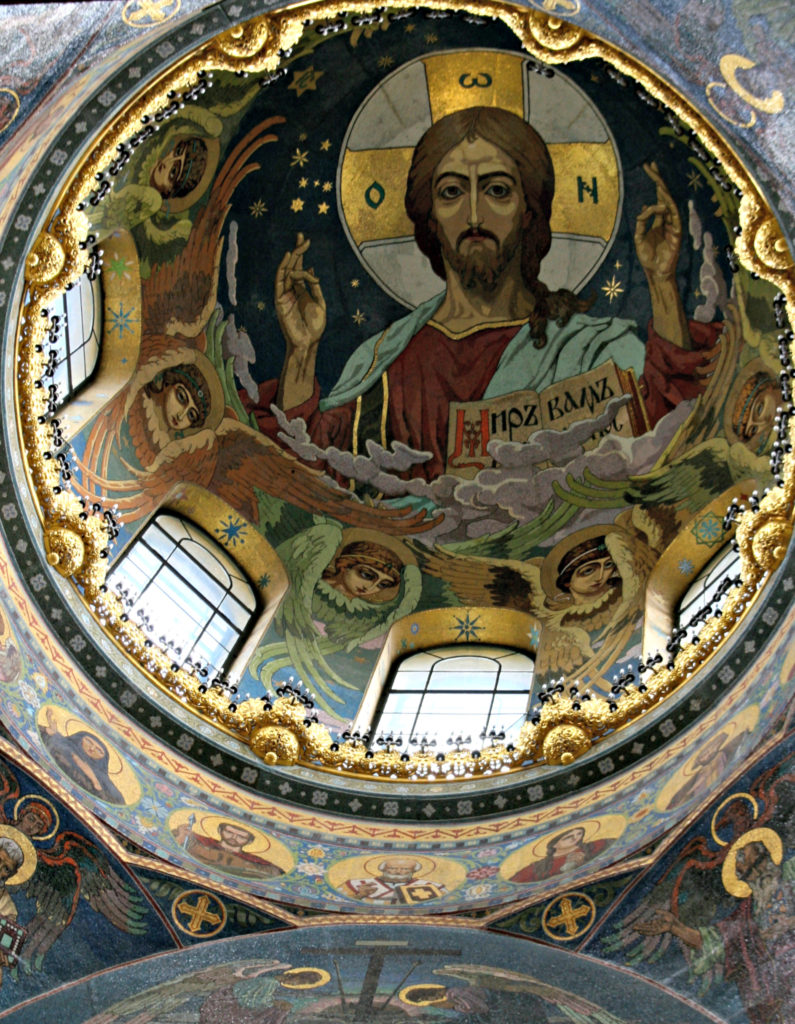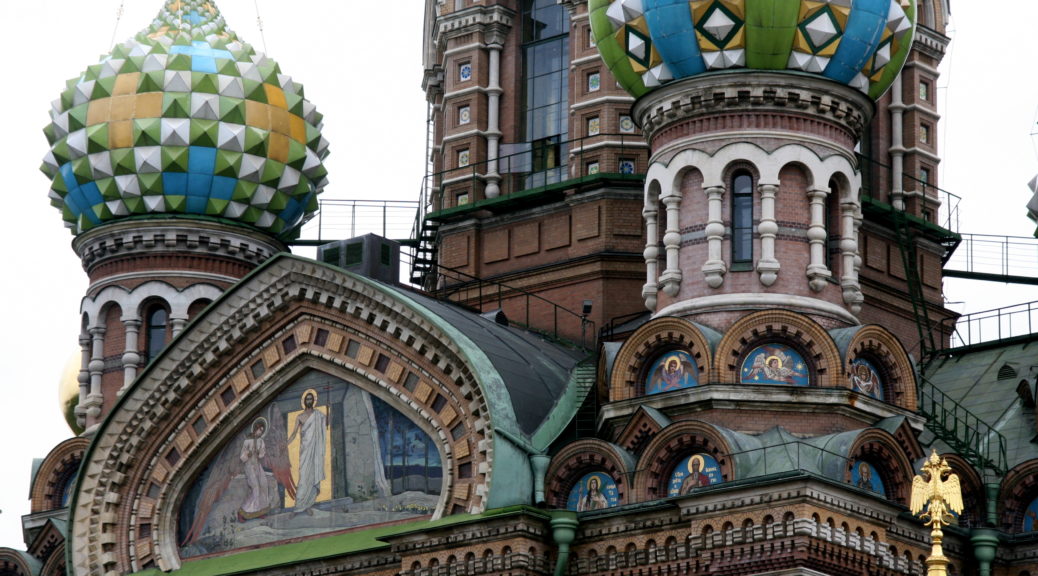
Savior on the Spilled Blood
We left Yusopov Palace, had lunch and then walked to a church commonly known as The Savior on the Spilled Blood.

Before I talk about the church, I want to tell you about the danger of pickpockets in Russia. They are on the streets and also at tourist sites, posing as other tourists. They often work in pairs. Our guide cautioned us about pickpockets as we walked to the church. She frequently told us to be mindful of our purses and wallets and for spouses to watch each other, especially if someone not from our group was nearby. Men were told that they should not consider anything in their back pocket as their own. We only carried a photocopy of our passport page – our actual passports were kept in the safe in our cruise ship cabin. We did not experience any problems – I think our guide encouraging us to be so cautious was the reason why.
The Savior on the Spilled Blood’s official name is the Church of the Resurrection of Christ. The church is located on the site where Alexander II was fatally attacked. It is common in Russia to build churches on the sites of historical events. Under the rule of Alexander II, serfs (agricultural laborers who were obligated to work for a “master”) were increasingly angry about their status. In 1861, Alexander II emancipated the serfs, although they were given no land rights which resulted in discontent in the peasant population. Alexander II also instituted other reforms, including judicial, urban and military changes. As is often the case, change is not well-received by everyone and there were people angry with the changes that were made. There had been other assassination attempts on Alexander II’s life, but he was ultimately killed by a bomb in 1881 as he exited a carriage. The assassin was a man who opposed his reforms. Alexander III, his son, came into power and ordered that a church be built on the spot where his father was attacked.
Construction of the church began in 1883 and was finished in 1907. There were challenges in building the church because Alexander III wanted the spot of his father’s murder to be on the premises of the church – and this was very near the Griboyedov Canal. At the time, a wooden foundation would have been constructed. Ultimately, water would have worn away the foundation so a new kind of foundation was used – concrete. The outside of the foundation was also sealed with clay. The use of concrete and sealing it with clay was considered innovative in its time. The church was known as a “symbol of science.”
The pictures below are of the church showing its close proximity to the Griboyedov Canal and the place inside the church marking the site of Alexander II’s murder. The second picture is the canopy of the memorial. The roof of the canopy is decorated with arched gables and carvings. At the top is an eight-sided pyramid that holds a cross with 112 topazes. The third picture is the base of the memorial (it is beneath the canopy). Although not visible in my picture, some of the stones from the road where Alexander II met his fate can be seen – they are actually below floor level.
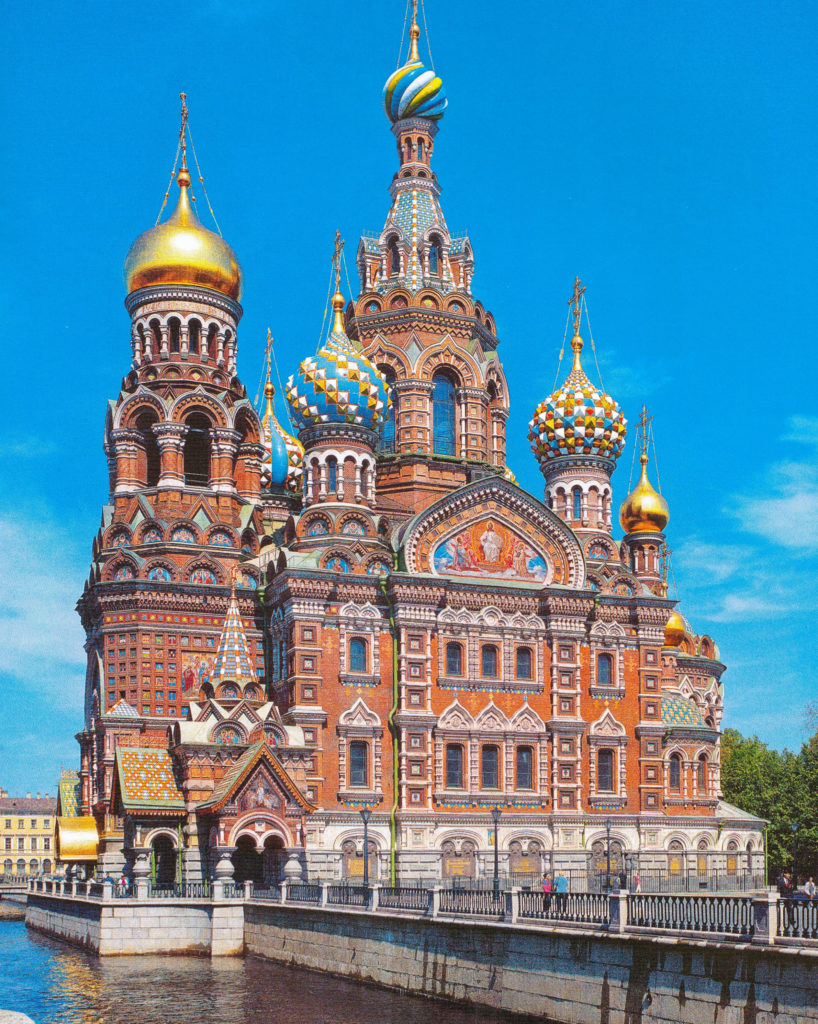
(Saviour is the English spelling and is used in the book title)

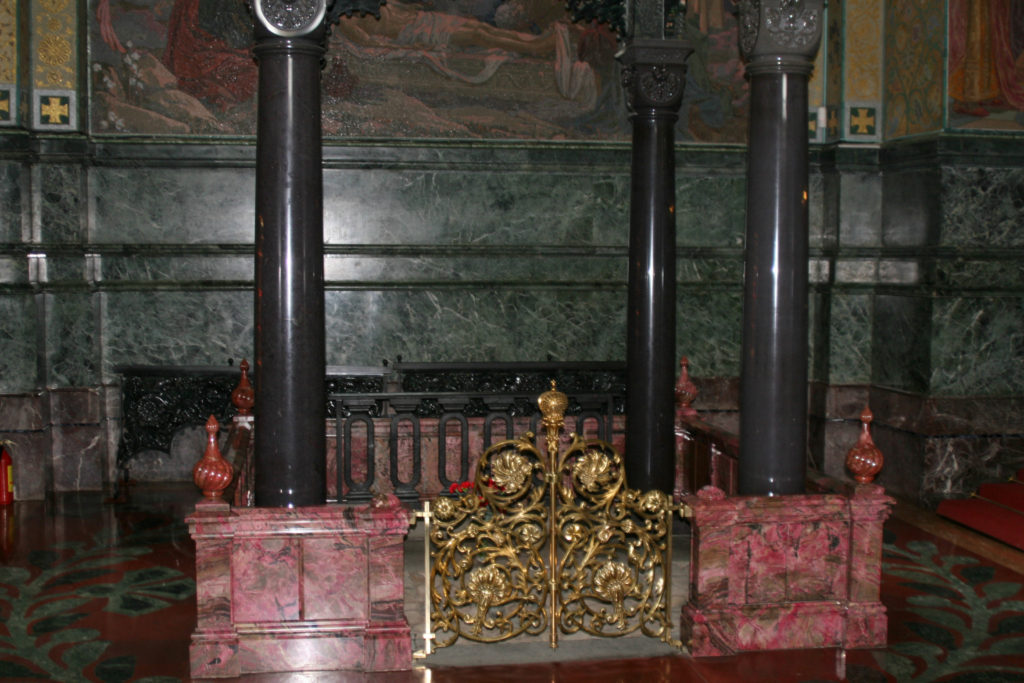
The church did not function as a typical house of worship, but was only used to conduct memorial services. It was closed in the 1930’s when the Bolsheviks took power and destroyed many churches throughout Russia. It was looted and badly damaged, but fortunately not destroyed. It underwent 30 years of restoration and finally reopened in 1997. Today it is not consecrated as a church so is not a place of worship, but rather serves as a museum.
The church has a central cupola and four onion-shaped domes. They are decorated with gilt and brightly colored enamel on sheets of brass. On the right side of the first picture below, you can see the bell tower which adjoins the church. It has a gold cupola. The church is just over 265 feet tall. The exterior of the church has over 4,300 square feet of beautiful mosaics telling the story of Christ and depicting the coats of arms of Russian towns. With its bright onion-shaped domes, it is a prominent and unique building in St. Petersburg.
The first picture below is a picture I took of the church while on a boat tour of St. Petersburg. The next three pictures are close-ups of some of the beautiful mosaics on the church exterior. They are “The Resurrection,” “The Bearing of the Cross,” and “The Descent into Limbo.” These are followed by others showcasing some of the facade and the “onion” domes.
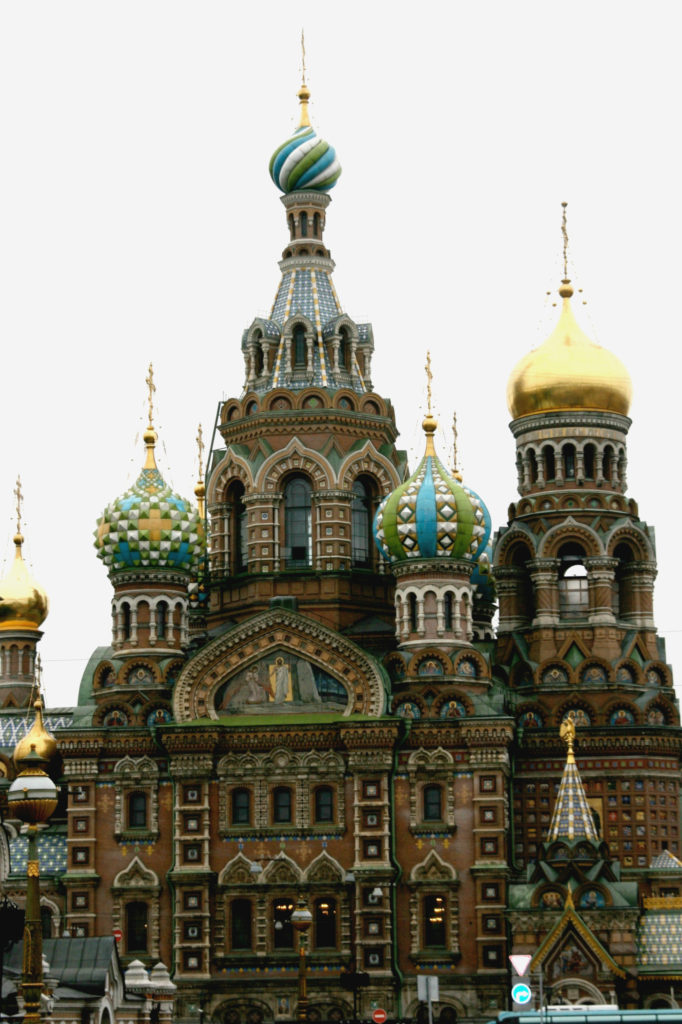
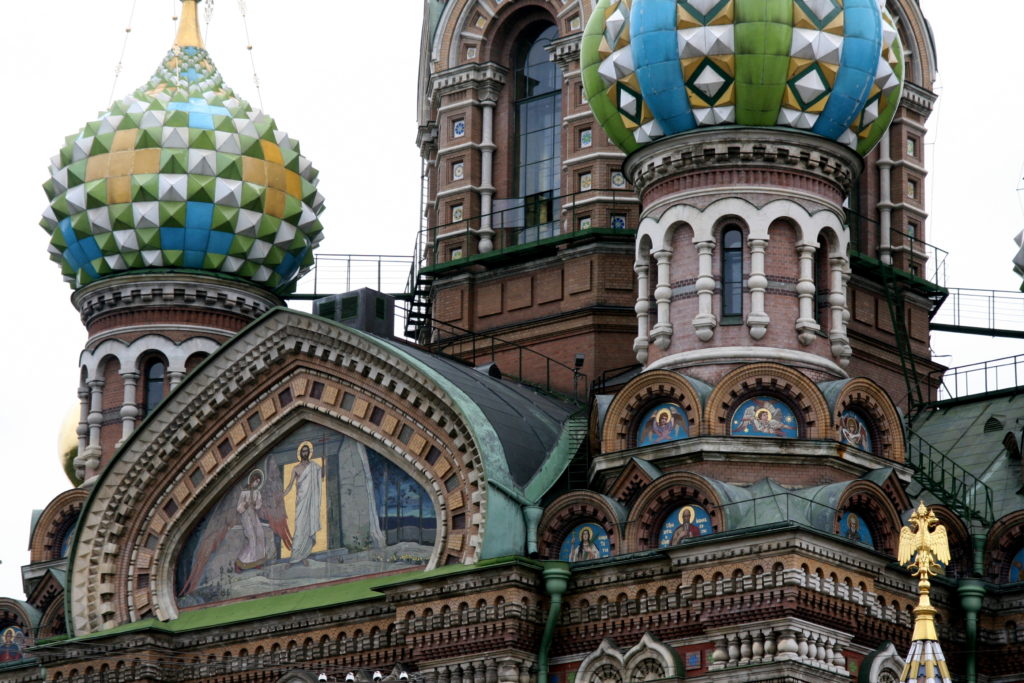
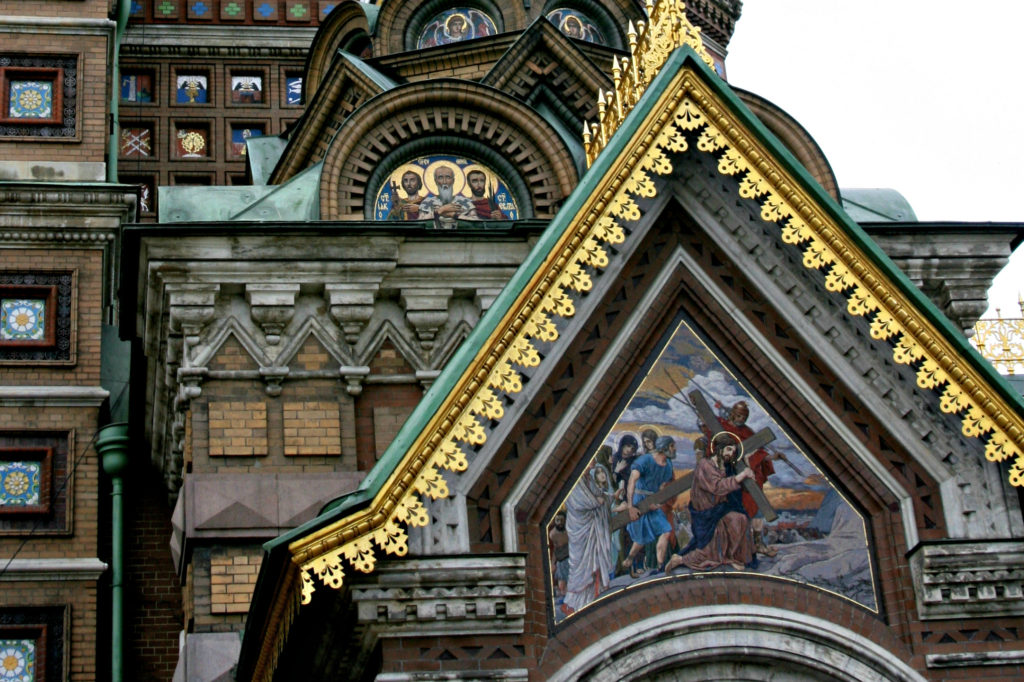
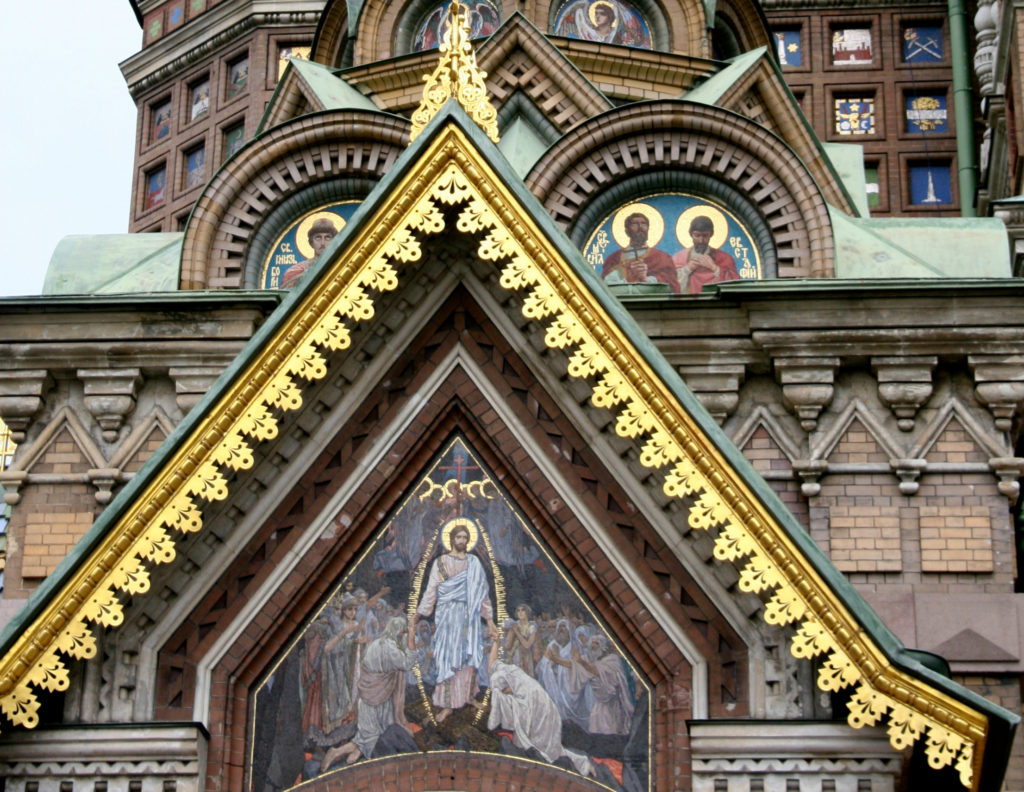
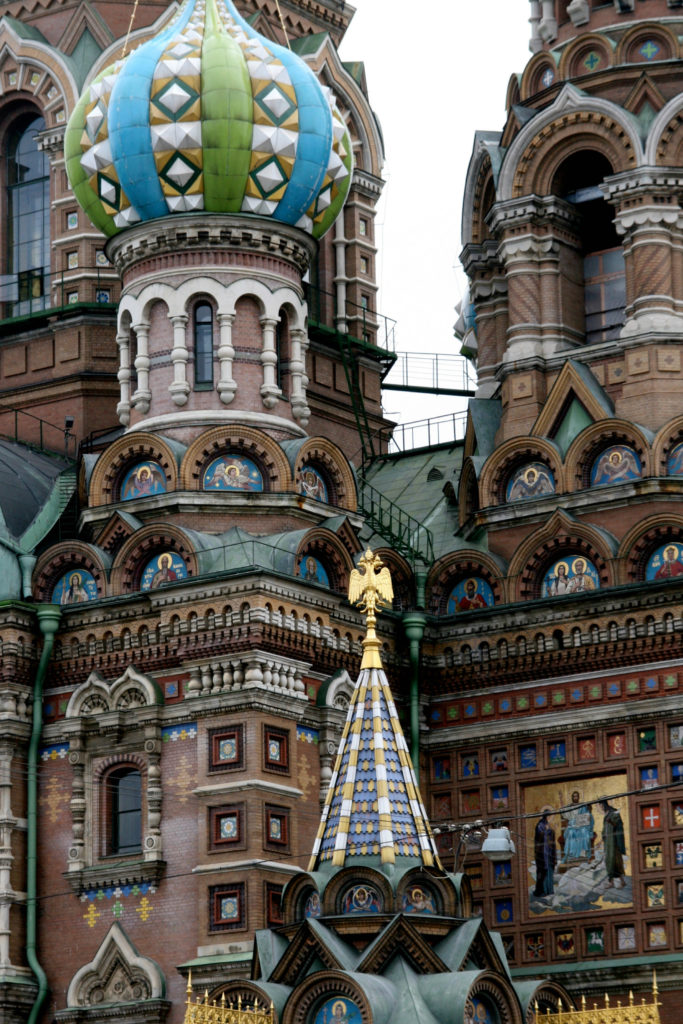
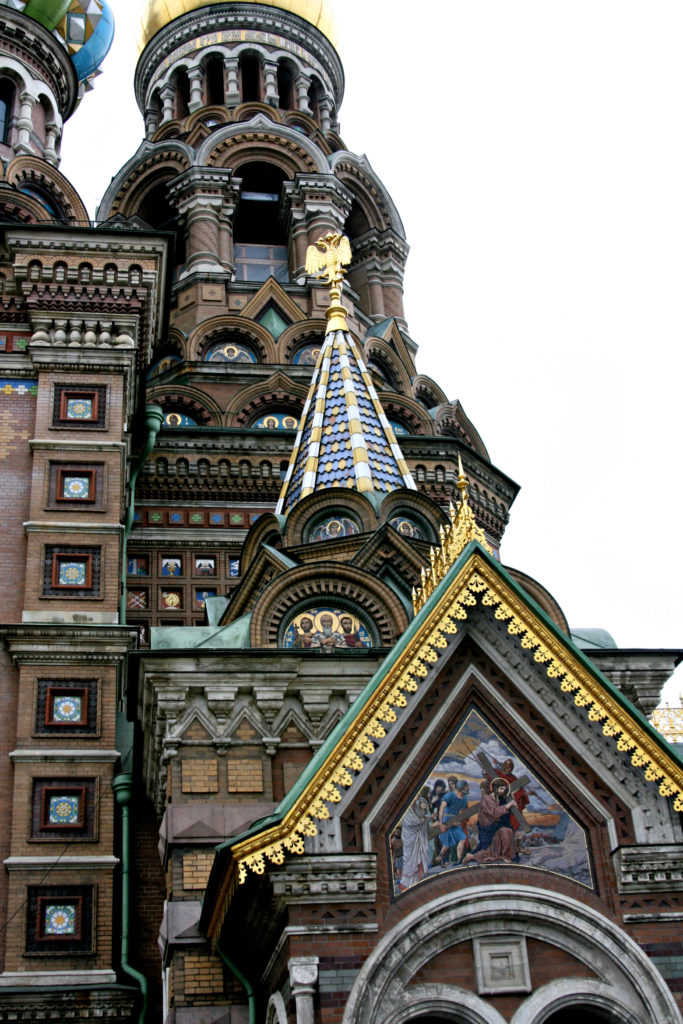
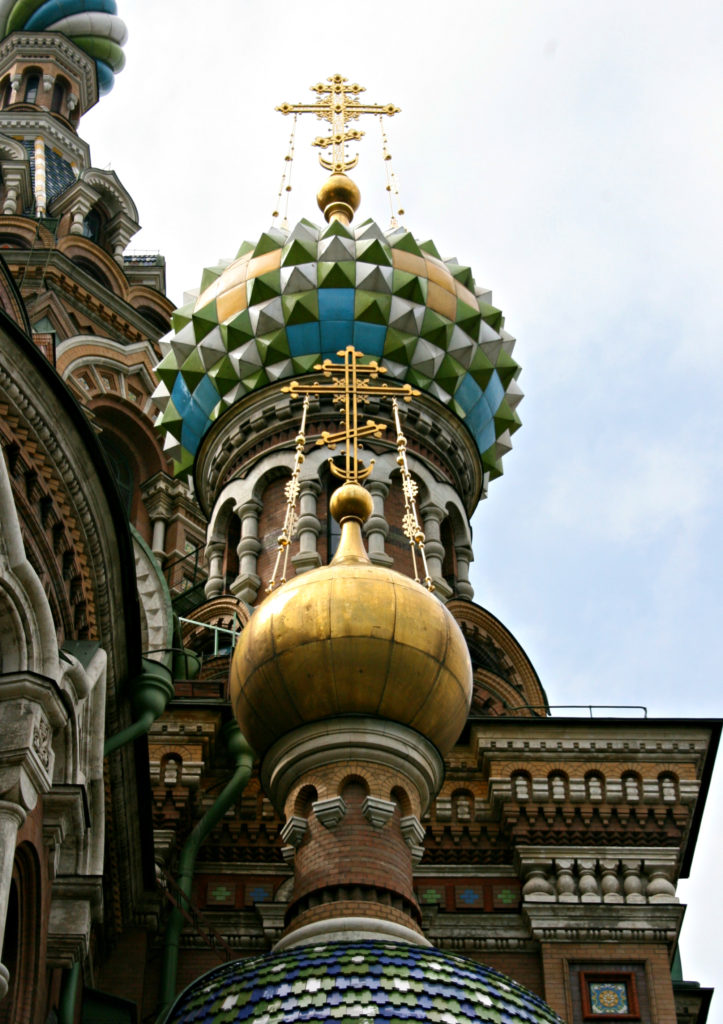
As beautiful as the exterior of the church is, we were absolutely overwhelmed when we saw the extraordinary mosaics as we walked into the church. The mosaics were designed by prominent Russian artists. There are almost 71,000 square feet of mosaics inside the church, completely covering the walls and ceiling. The first picture below is from Shutterstock and shows part of the central dome and some of the pillars that support the dome. Under the dome is a beautiful marble floor. The other pictures are of the mosaics on the pillars.
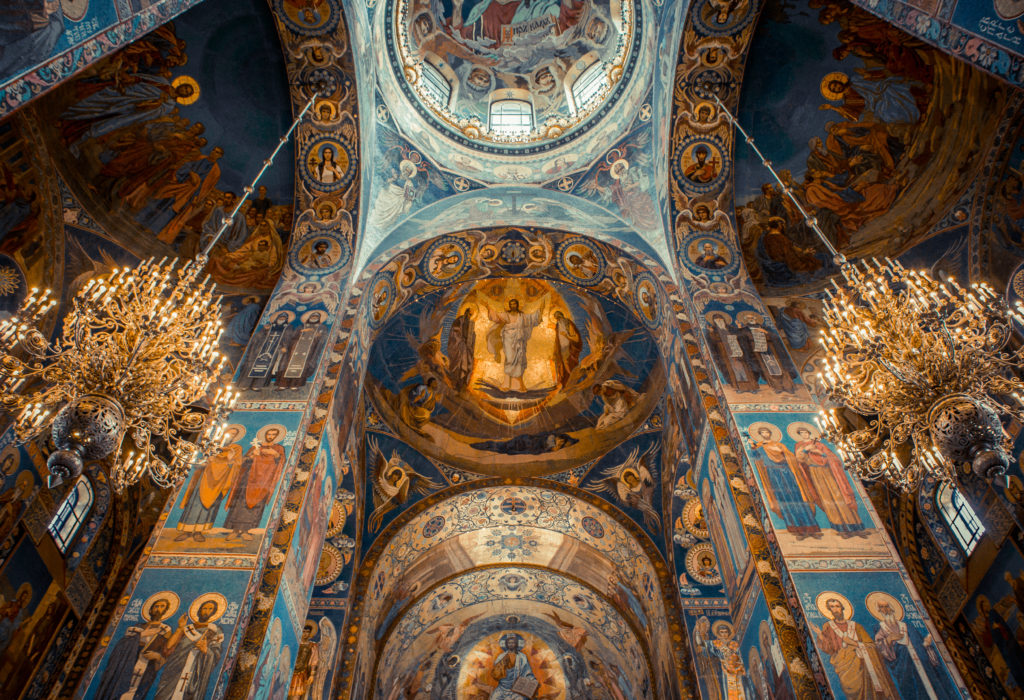
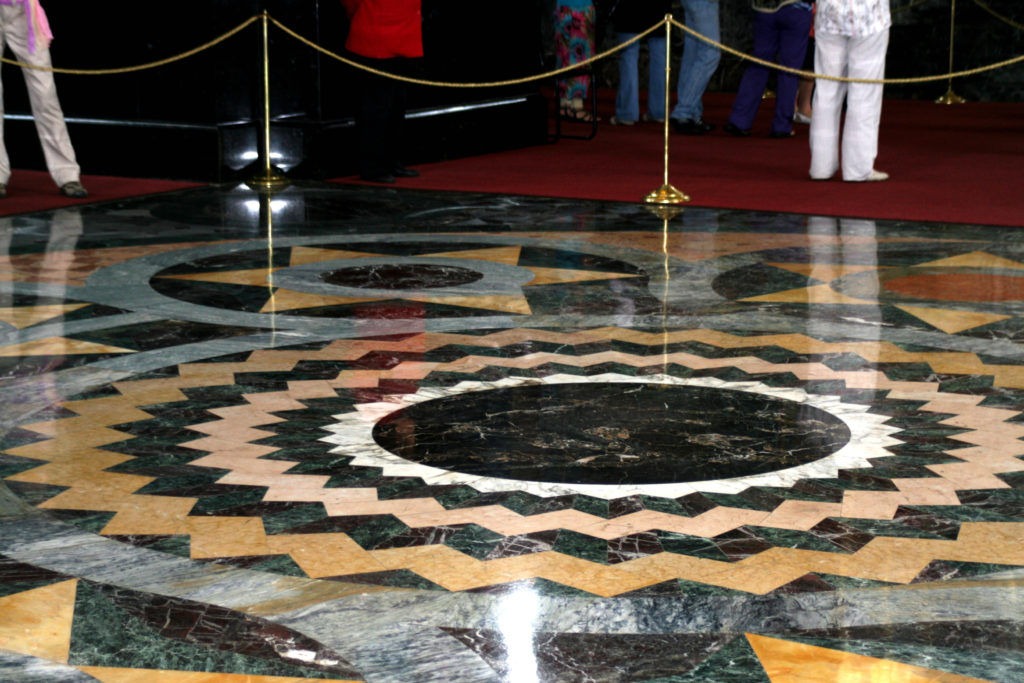
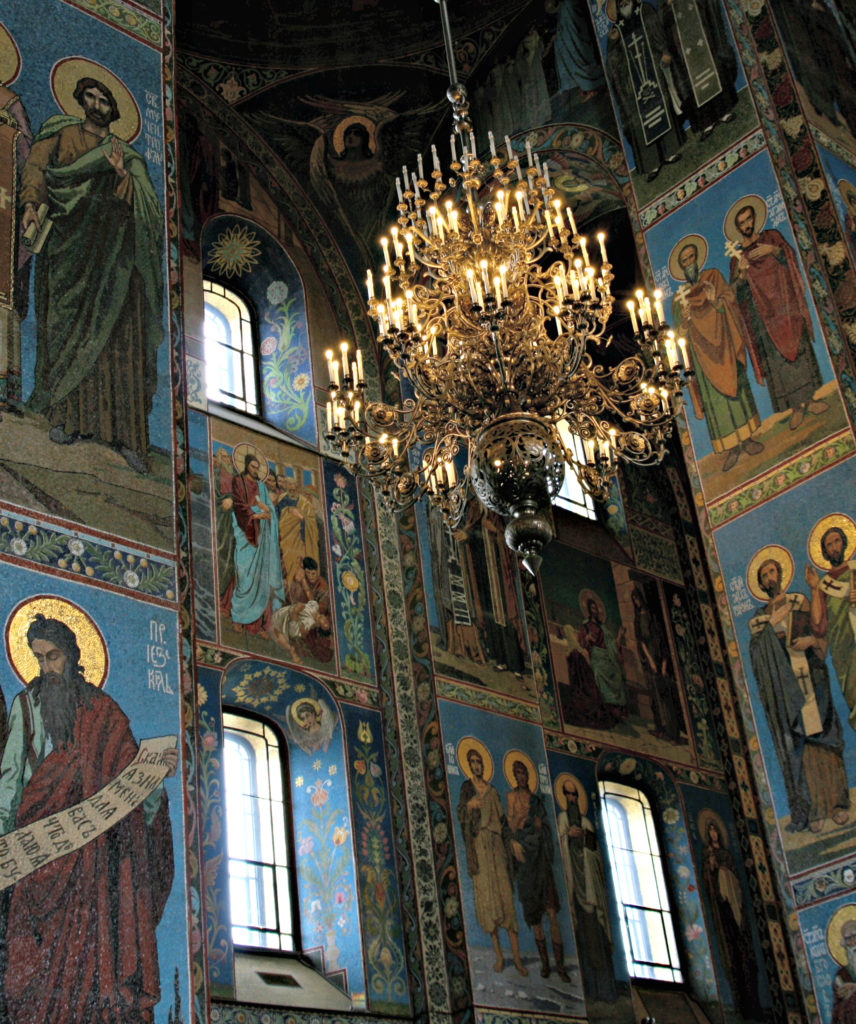


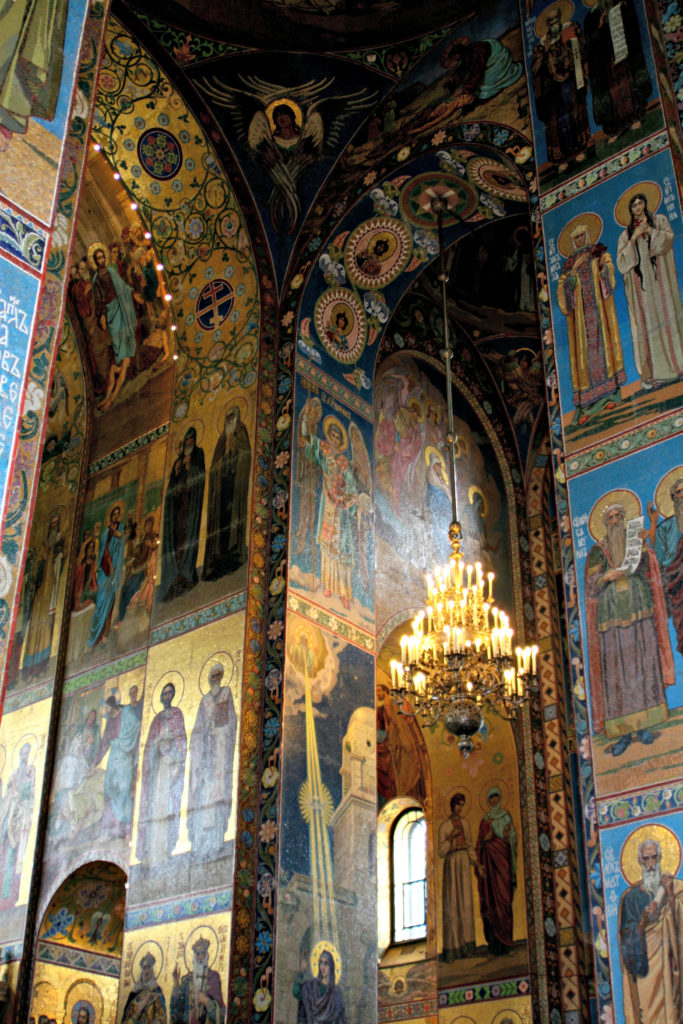
When you see this beauty, it is hard to imagine the artwork is actually mosaics, but it is – as you can see in the first picture below. There is not one painting inside the church. Paintings could be damaged by the humidity which made mosaics a wise choice for the church.
While I came no where close to learning the titles of all the mosaics in the church (there are 308 of them!), I do know some. The second picture is “The Blessing of the Children.” Just above this mosaic you can see the interior of one of the onion domes. This is followed by “The Raising of the Son of the Widow Nain” and then by “Resurrection.” The last picture depicts two scenes. The one on the left shows part of the “The Nativity of Christ.” I do not know the title of the scene on the right, but it appears to be Simeon holding the baby Jesus in the temple.
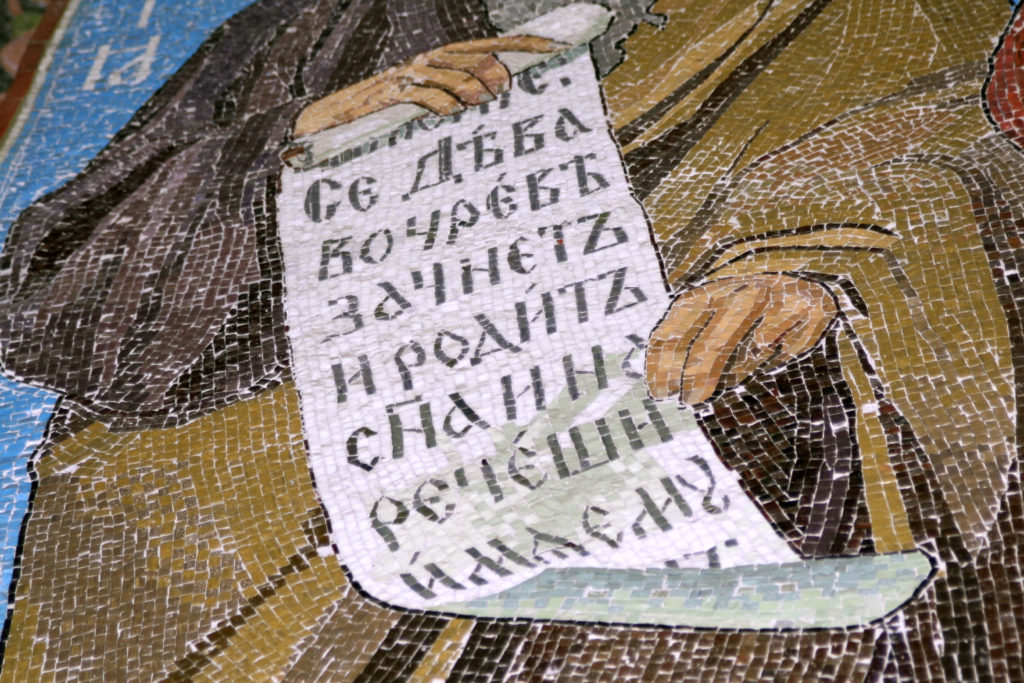
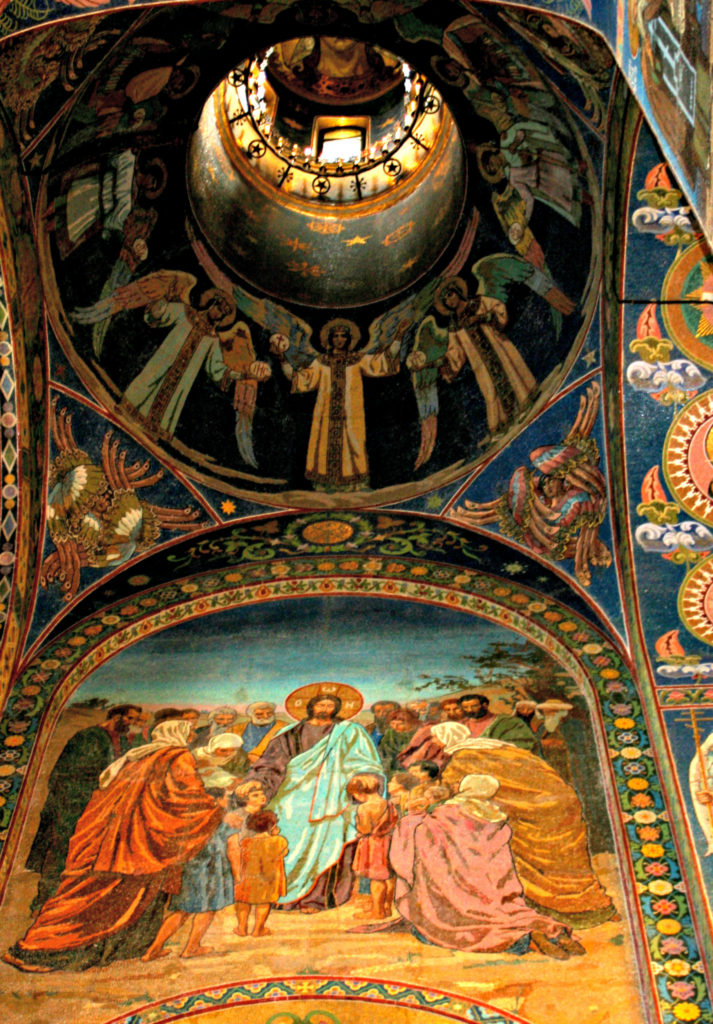
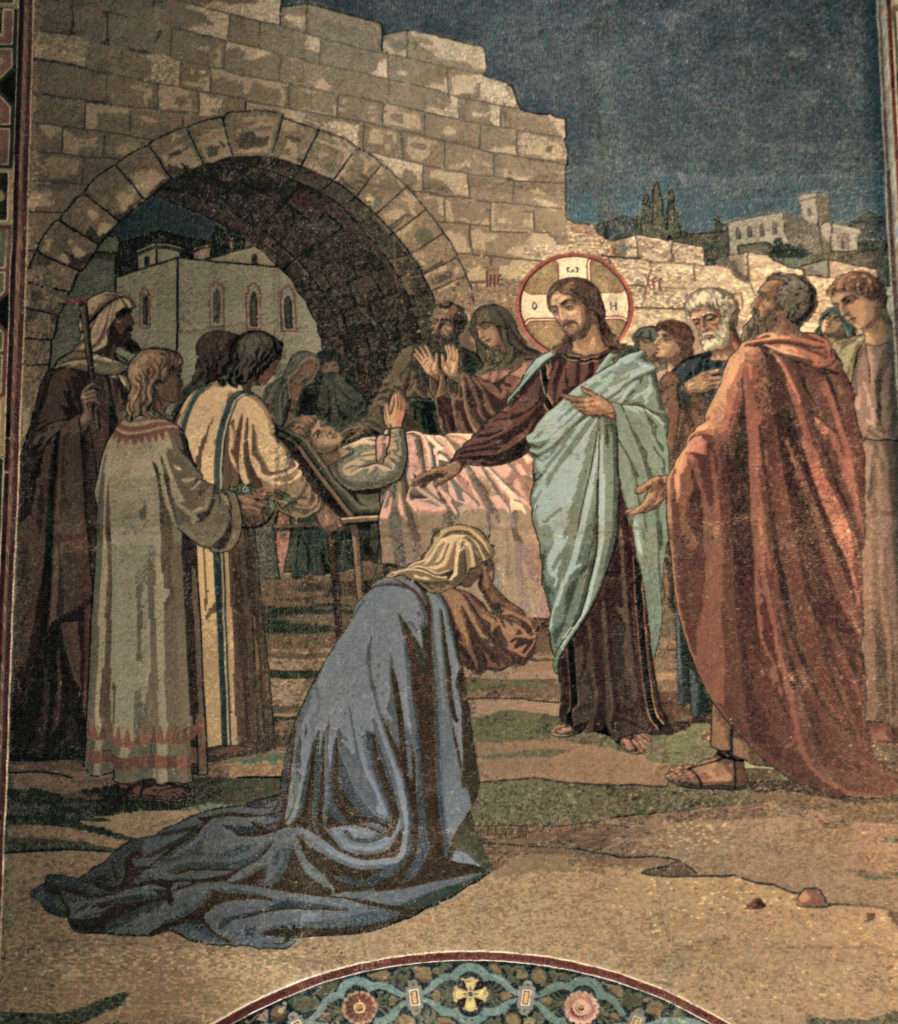
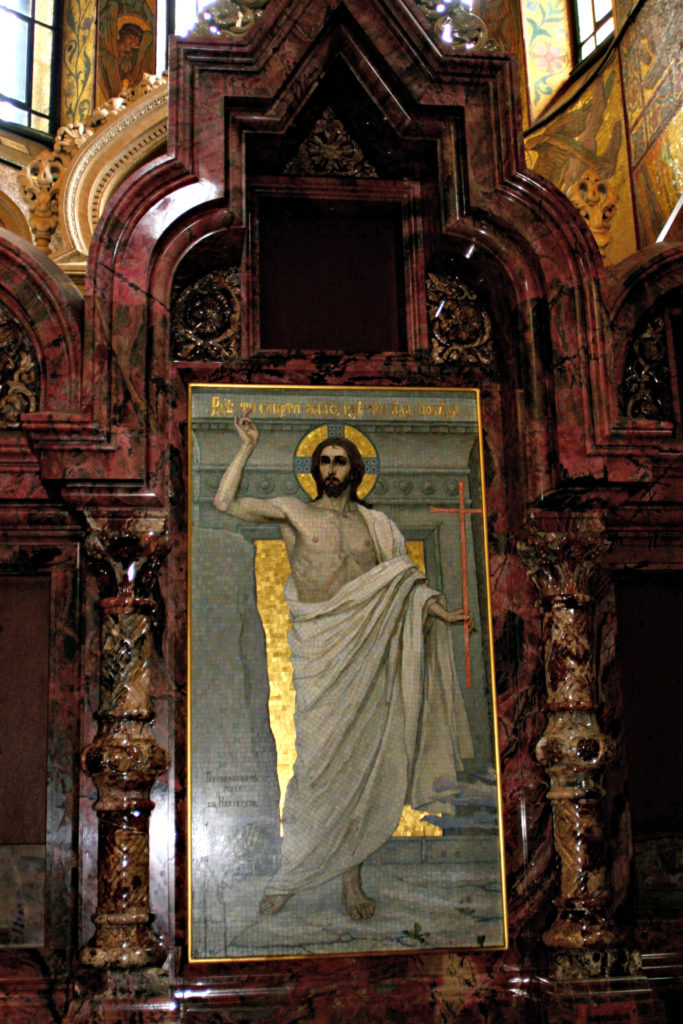

The pictures below are of the altar in the central nave. In the central area there is a portion of a mosaic entitled “The Eucharist.” I was unable to take a picture of the mosaic in its entirety because it sits just inside the iconostasis. There is more detail in the second and third picture, both of which were taken from different angles. In the second picture, you can see an apostle reaching for bread that is held by Christ. In the third, you can see some of the apostles waiting for the bread and wine Christ would give to them on what is now called Maundy Thursday.
To the left of the center mosaic is another entitled “The Mother of God and the Child” and to the right is one entitled “The Saviour.” High above the altar is the mosaic you see pictured last in this section. It is titled “Christ in Glory.”
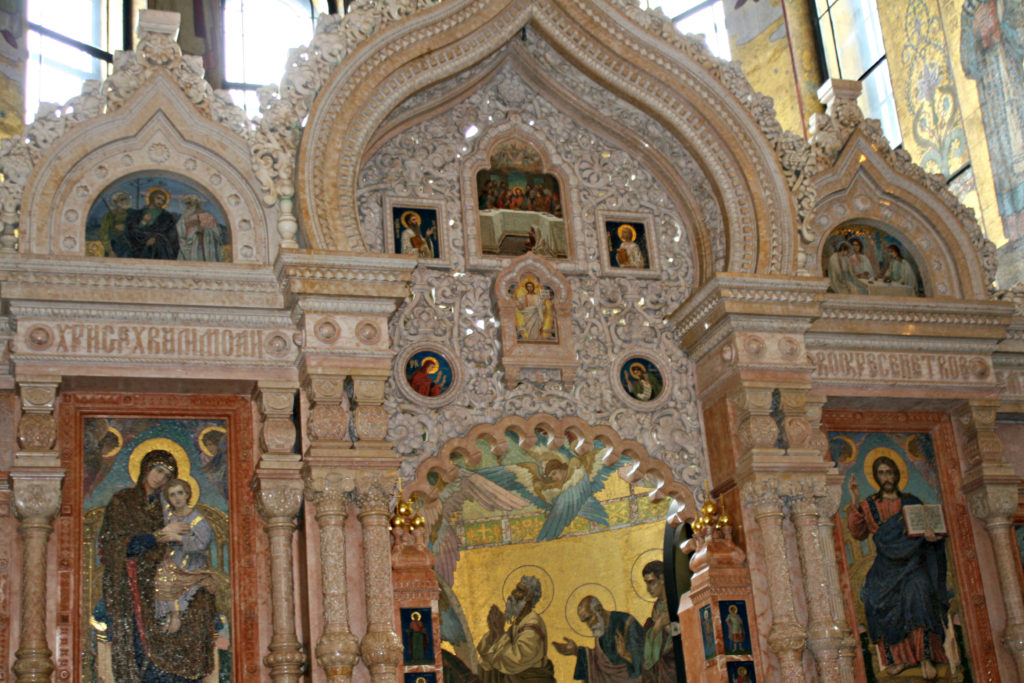
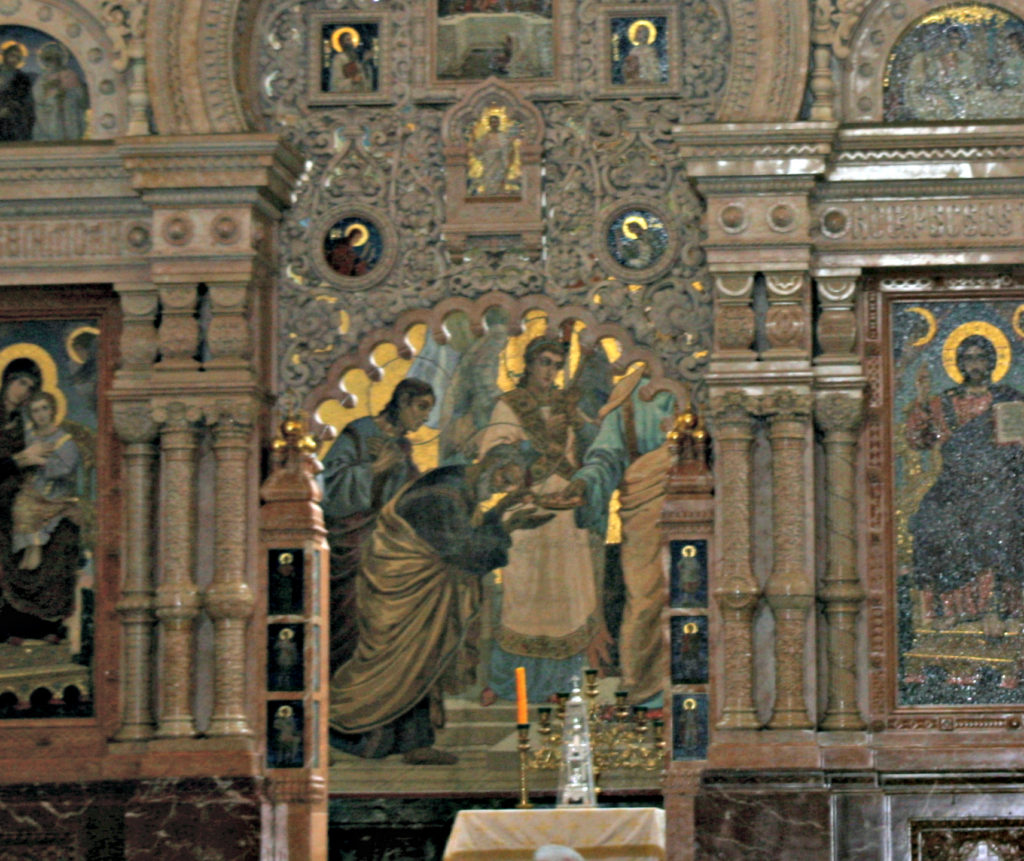
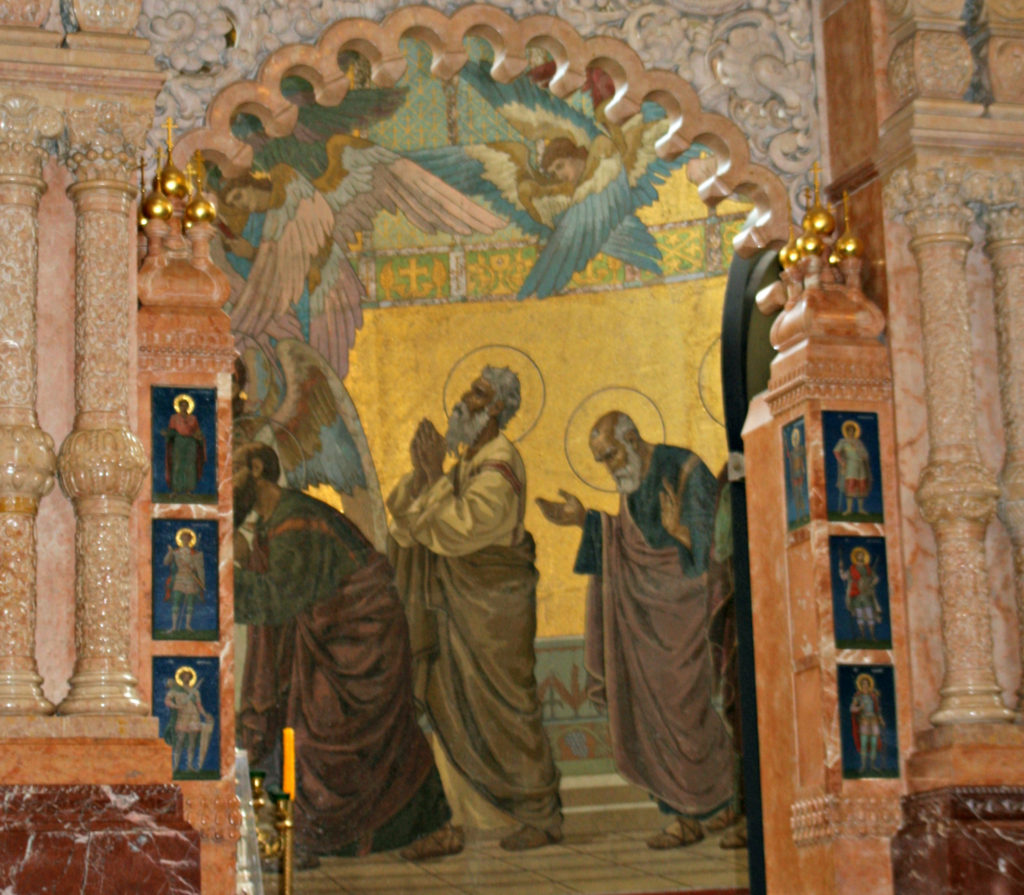
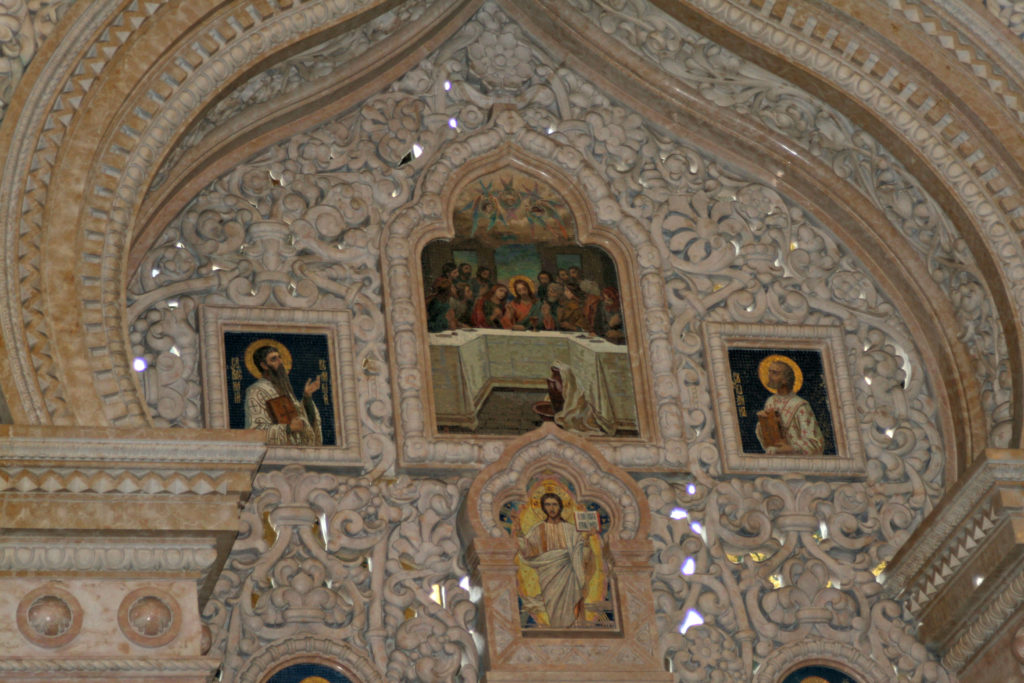
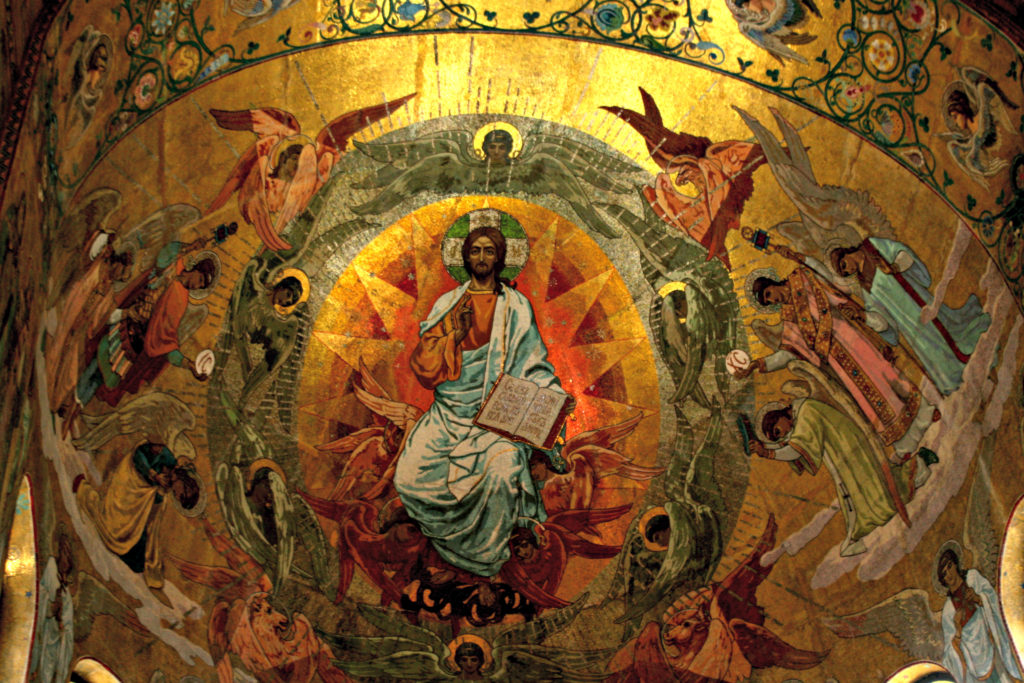
I am ending this post with an incredible mosaic that serves as the ceiling of the central dome. It is entitled “Christ the Pantocrator” which can be translated as almighty or all powerful. It often is the art portrayed in the central dome of a church – as it is here. The artist for this mosaic, and 41 others inside the church, was Nikolai Kharlamov.
I found The Savior on the Spilled Blood to be just an amazing church and work of art. We are hoping to return to St. Petersburg in 2021 and spend more time here. But if I could only visit one place in St. Petersburg, this church is the place I would choose.
